Photographs: Danish Siddiqui/Reuters
The National Disaster Management Authority, which came into existence in 2006 after the enactment of an enabling law in December 2005, always makes its presence felt only after any disaster strikes.
Even though it is not a regulatory body, one does not know why it can’t do enough to lessen the impact of disasters by preparedness and displaying battle-readiness. The NDMA has a budget of around Rs 1,000 crore every year for various projects and programmes.
While the country is disgusted with a passive, dull and inactive NDMA, rediff.com Sheela Bhatt spoke to its vice chairman M Shashidhar Reddy, who was appointed its member since its inception in 2005.
Prime Minister Manmohan Singh is the chairman of the body that is under fire for its tardy response to the Uttrakhand tragedy. In spite of the prime minister’s presence at the top of the institution it has remained a lightweight body in the disaster-prone country.
The Uttrakhand tragedy is so huge that after 15 days, the NDMA or the state government or its Chief Minister Vijay Bhauguna have no clue about how many people have died.
The Comptroller and Auditor General had slammed the functioning of the NDMA but still nothing moved. Its national executive committee was almost defunct between 2008 and 2011. The NDMA is run by the prime minister without a working plan.
The interview was conducted at Reddy’s posh office in New Delhi where hardly any meetings take place in normal times.
Click on NEXT to read the interview...
'The situation went from normal to serious in 45 minutes'
Image: The statue of a Lord Shiva is submerged by flood waters of the river Ganges in UttarakhandPhotographs: Reuters
Where were you when the news of a “cloud-burst” in Uttarakhand was reported? What was your first reaction?
I was in New Delhi. In fact on the evening of June 16, we were following the news from Uttrakhand. The NDMA control room was in touch with the Uttrakhand state government. At 7.45 pm on June 16 we got a report in our Dehradun control room that everything is okay. But, within 45 minutes the NDMA control room reported that “there is a serious problem.” In 45 minutes the situation had changed drastically.
So you knew beforehand?
‘From June 14 onwards there will be “very heavy rain” at one or two places’. That is the standard report that the Indian Metrological Department puts out. At 7.45 pm we were told that things are alright. At 8.30 pm they said things are very bad.
The cabinet secretary called me up at around 9 pm. It was a very shocking thing. Nobody expected it would be so bad. We put our forces in readiness. Thirteen teams of National Disaster Response Force were mobilised. Next morning all of them were in Dehardun. They were 45 people in all. The NDRF teams were stuck at Dehradun because roads were cut off.
The weather was bad on June 17. Communication was cut off. Everything came to a standstill. At many places there was no administration. Helicopters could not fly. There was no power. People in Kedarnath and government officials stationed at those places have been washed away or died.
On June 18, the weather improved and the first helicopter that took off had air force officers and state officials to conduct a reece to see what has gone wrong and where. They were able to reach Kedarnath and identified a place to land. These were the big Air Force helicopters. We had ten helicopters on June 18. Even then 45 helicopters were available. One of the constraints was making aviation fuel available.
...
'Very heavy rain doesn't mean this kind of flooding and death'
Image: Buildings destroyed during floods are seen next to the Alaknanda river in GovindghatPhotographs: Reuters
How do you look at the Uttrakhand tragedy if compared to other such disasters.
Normally when floods happen we get some kind of early warning. This was a high intensity rainfall event. This created very serious problems. Everybody was unprepared. Nobody expected this kind of devastation. Very heavy rain doesn’t mean this kind of flooding and death.
Was there warning of this deadly monsoon in Kedarnath and Badrinath this time? What did you do about it?
It’s not for the NDMA to do anything about it. It is the responsibility of the state government and district government who has to put disaster management plan in action and respond.
Who should warn the people and pilgrims?
The Indian Metrological Department gives bulletins. Any warning to the people is communicated by the state and district administration. It’s their responsibility alone.
Don’t you get a copy of it?
We get a copy of the IMD bulletin but action has to be taken by state government only. They put out bulletin (this time) and said “very heavy rain”. What does “heavy rain” mean? “Very heavy rain” means very heavy rain. But it doesn’t mean that in such a short time so much rain.
Tell us, what went wrong?
Nothing went wrong. What did you do in Mumbai in 2005 when there was 944 millimeters rain in a day? What did you do in Japan in 2011? Nothing anybody could do. The nature’s fury was so overwhelming that even the best-prepared countries can be immobilised and incapacitated. I am not saying that because it (devastation) happened in Japan, we should not do anything. Nobody knows that this will be the kind of rainfall and this will be the kind of the impact.
...
'We don't know how much it rained and where it rained'
Image: Soldiers work to install a temporary footbridge over a river to rescue the strandedPhotographs: Reuters
You are talking about intensity.
Not only intensity. Where is it going to rain today? That makes all the difference. When there is a heavy rainfall in Delhi, it rains in one part and the other part is sunny. On June 19, I called for meeting of officials of the IMD (that forecasts the weather) and also the Central Water Commission (which forecasts and monitors floods). I wanted to know what their present status of forecasting and observational capability is. Apparently, they didn’t know how much it rained (in Uttrakhand on June 16/17) and where it rained. We don’t have the observation capacity (in those areas.)
Why?
We don’t have it! We just don’t have it! It’s not there! All the areas are not covered anywhere in the world. In the June 19 meeting I asked them what their plan was for the next five years. I didn’t waste any time. I knew Uttarakhand is a warning. The chief minister (Vijay Bahuguna) rightly said that with this kind of forecast (“very heavy rain”) what does he do? Could he build a bund behind the Kedarnath temple to stop the water when he got the forecast on Sunday night?
There was no precise warning even. They didn’t know even where it was going to happen. I am not finding fault with anybody. But there were gaps in communicating the warning and how precise the warning has to be.
I said at the high-level meeting that within ten days I want a plan for world class observational and forecasting capabilities to cover the Char Dham yatra. We will follow it up. It has to be done. In 2004 we had the tsunami. Many people didn’t know what a tsunami is. 16,000 people died. After that India has set up world class tsunami early warning centre. If today there is a tsunami, nobody will die.
This is the case of flooding. It’s an extreme weather event where high intensity rainfall in a short period of time caused havoc.
When will be the world class monitoring equipment be set up in Kedarnath?
When the tsunami came, within two and a half years, we set up a world class early warning centre. Now we have asked them to come up with a plan. We will get it examined. We will take it to the government. Once it is commonly agreed it will be done in shortest possible time. Right now the Amarnath yatra is on. It’s in a smaller area. The weather bulletin is issued at 4 am. Based on it, the pilgrimage is regulated. If the weather is bad we need to leverage science and technology so that pilgrims do not suffer.
...
'Such devastation with such heavy rainfall and floods has never happened anywhere'
Image: A bridge submerged in the flooded water of the river GangaIn this case, why was such monitoring not in place taking into account that so many people visit the area?
We have the entire east coast. It was a tsunami prone area. We didn’t realise that such a thing at such magnitude could happen. Once the tsunami happened we set up the monitoring centre. Such devastation with such heavy rainfall and floods has never happened anywhere.
How much rainfall occurred on June 16-17 in Kedarnath and Badrinath?
They (IMD) don’t have many details. Because there are only 20 automatic weather stations in Uttrakhand. We definitely need to have more observation facilities. The whole problem started from the area above Kedarnath
Approximately how much rain must have fallen above Kedarnath?
I will just tell you one instance. In 2010 in Leh we had a cloud-burst. Do you know how much it rained there? Nobody knows! The nearest air force station recorded 12.5 millimeters. There are other instances. In 1970 in Himachal Pradesh we had rainfall of 34.1 millimetres in one minute!
So in Kedarnath was it 200 mm? Or above 100?
See, if today we have rainfall outside this office we can’t say how much it rained in Delhi. The variation will be there. It’s important to understand where it rains, how much it rains. Special variation of rainfall is important to understand.
Again and again I am asking if you had an idea of heavy rain on June 16 at 8.30 pm then why not warn at least people in the downstream areas?
In a short period of time it rain heavily. In New Delhi, the Yamuna was flooding, we knew 8 lakh cusec of water was being released. We knew how it would affect people as water comes to Delhi. It was a gradual event. But, here in one go huge water poured down without any preparation. That why it’s called the Himalayan tsunami
It was not possible to warn people in downstream areas because we didn’t know what was coming. We have never experienced this kind of thing.
...
'There was no warning of floods'
Image: Buildings destroyed during floods are seen next to the Alaknanda river in GovindghatPhotographs: Reuters
In Uttarkhand how many state and district disaster management offices are there? What are the guidelines for them?
They are there. How effective is their functioning is the matter we need to seriously look at. The NDMA prepares guidelines for them. We cover early warning, we look at capacity building, mitigation, awareness building and response after the disaster. We tell them what states should put in place. On basis of guidelines, the states and the Centre should put in place the system. These guidelines prepared after extensive consultation.
What happened to these guidelines?
The states plans are approved by respective chief ministers. It’s up to them to act. You know in India we have this Centre-state issue also.
Have you been visiting Uttrakhand?
Yes. We have NDMA member V K Duggal in charge of the state. He had visited it last month. They had taken a decision on what needs to be put in place!
Have you done any study of illegal encroachments in hilly areas, particularly, in Uttrakhand?
The NDMA doesn’t get into it. It is the responsibility of the state. All over India just not in Uttrakhand such encroachments are going in. What kind of safety measures to take and what kind of codes to be followed is a local responsibility. Gram and district panchayats should do the job. In 1975, the Centre had circulated the model bill on flood-plain zones. All states were asked to plan what kind of structures can come and all that. Only Rajasthan and Manipur, who doesn’t get floods, enacted the law!
In 2007, very serious floods occurred near New Delhi. There was a study taken up and I found that 25 percent of houses damaged were built in the last 25 years. There is tremendous pressure on land all over India. We need to balance. Our guidelines to states are only to tell them to follow various laws of environment, building codes etc.
Are you co-ordinating with Central Water Commission? The flood forecast of Uttrakhand was given to you by CWC before June 16?
There was no warning of floods. The IMD didn’t know the information of rainfall. IMD didn’t know how much it rained in Kedarnath so they could not give warning of floods nor evacuate people in advance. That’s why we say we should have better observation and forecast facilities.
I will tell you about Andhra Pradesh. It has 1,000 weather stations and they would increase to 3,000. When they will have 3,000 weather stations they would have 10x10 kms grid covered by each station. Suppose in-between areas that are not covered by these weather stations if Uttrakhand kind of sudden rains happens then nobody would know at lower level areas which will be flooded.
In spite of 3,000 weather stations and rain observation facilities there would be some areas, which will remain uncovered. If huge localised rain occurs in a very sudden manner the adjoining areas too will be affected. We need combination of ground observation and satellite observation facilities to avoid flooding. We need to put Doppler weather radars in place. We can get six hours advance notice of rains.
The IMD has planned four doppler radars on the east coast to monitor cyclones in Kolkata, Vishakhapatanam, Paradip and Chennai. The IMD has come up with a modernisation plan with 55 such doppler centers all over the country in the coming years. It’s not just cyclones that bring rains and floods. The local weather patterns too are important.
In spite of it some areas may not be covered. In Bihar, the Kosi gets flooded due to rains in Nepal. If we don’t know what’s happening in Nepal, even then we get affected.
...
'Even Japan took time to put in place their relief machinery post tsunami'
Image: A woman cries in pain she is carried away by soldiers from an army helicopter during a rescue operation at JoshimathPhotographs: Danish Siddiqui/Reuters
How many times has Dr Singh attended the NDMA meetings?
If there is anything important I meet him. We met after the tsunami in 2011. I keep meeting him on a regular basis.
In spite of his weight why is the NDMA not performing as it should?
In every state does everything happen as we want? Are our plans implemented, as we want? We have serious issue of trained manpower. The NDMA is not for relief and rescue approach only.
Relief was the most focus of disaster planning. Now we have widened the approach.
In first five days there was no administration to talk about on ground zero. What were you doing?
We co-ordinate relief and assess issues. I have found that with this kind of devastation nothing survived in Kedarnath. Were there government officials in Kedarnath? Was there police? Nothing. No government machinery survived over there. Roads were blocked. The weather didn’t allow helicopters to reach. Even Japan took time to put in place their relief machinery.
In Kedarnath isn’t it the Mandakini that got flooded due to a cloud burst on Gandhi lake? Is it not true that illegal construction on the dried western tributary of the Mandakini resulted in havoc and so many deaths?
That it was a cloud burst is true but where did it strike and how much water flowed, we don’t know. It was an extreme weather event where huge rains fell in a short time. Normally at that elevation it is unusual.
See a cloud burst could be 34. 1 millimeter in one minute or 205 mm in five minutes as recorded in Venezuela. But, if in a lonely area there is a cloud burst, we don’t know what actually happened. But water finds it way down. In this case it came down in Kedarnath.
How many deaths may have taken place?
We are still collecting data. They say there were 3,000 to 5,000 people in Kedarnath. Those who went to higher ground survived. But there must be a large number of deaths. In Kedarnath, some people from surrounding areas came in. Nobody knows how many survived.
There could be 4,000 deaths?
More than 4,000 deaths are expected.

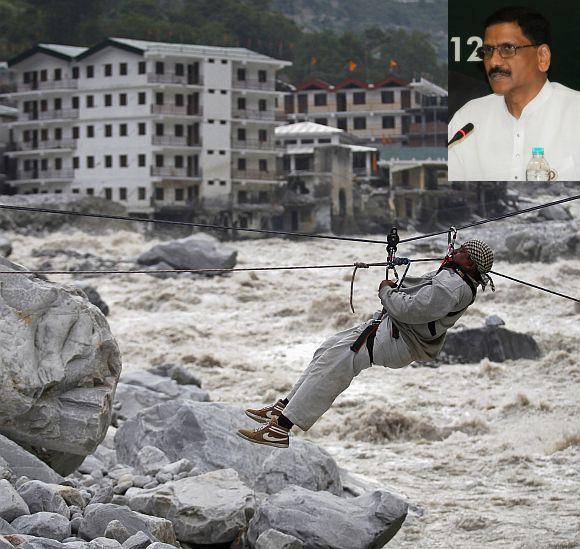
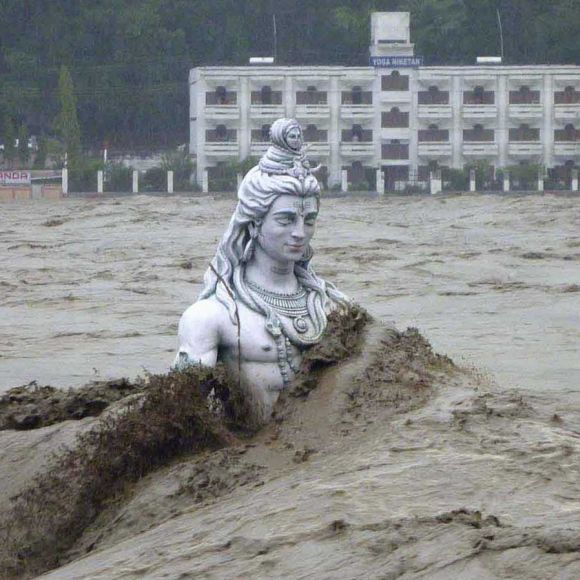
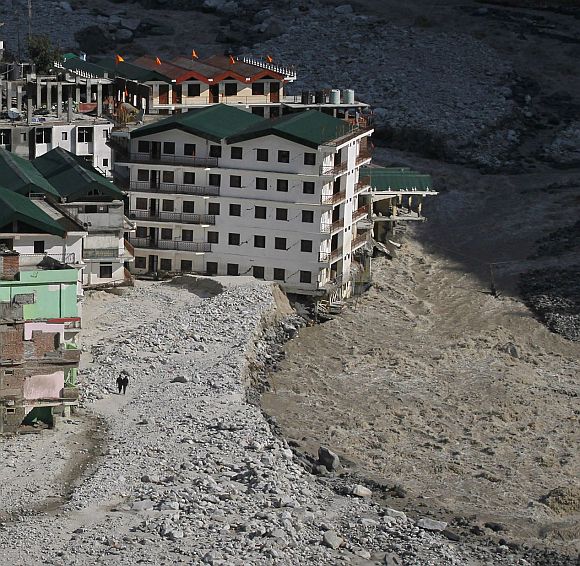

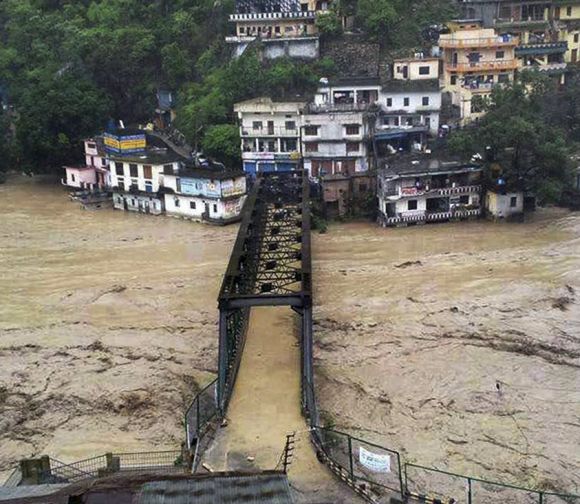
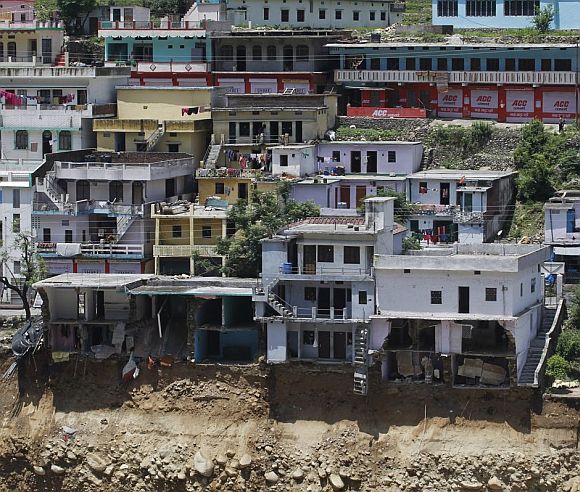
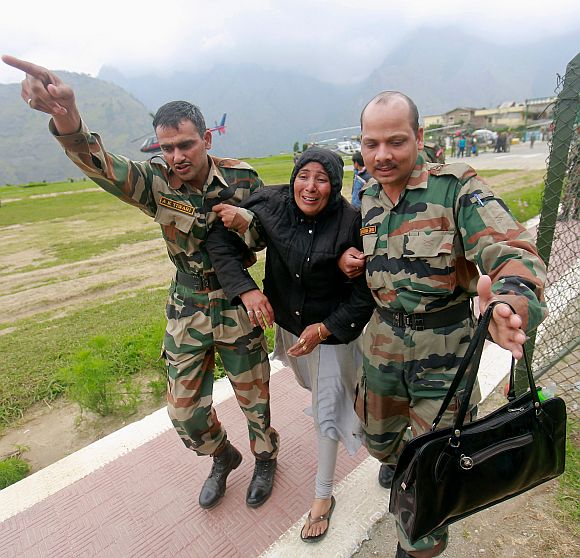
article